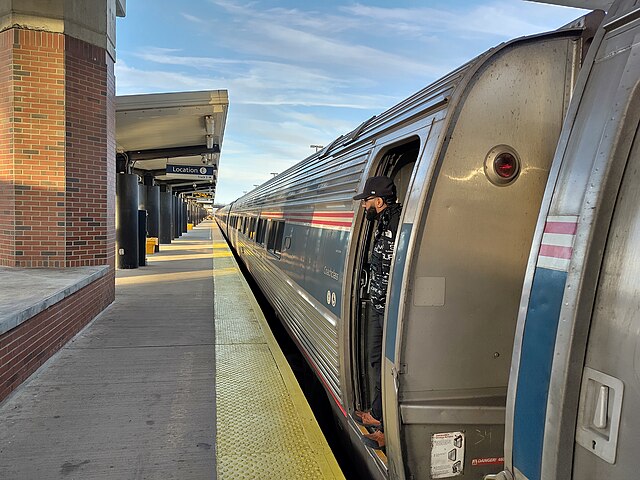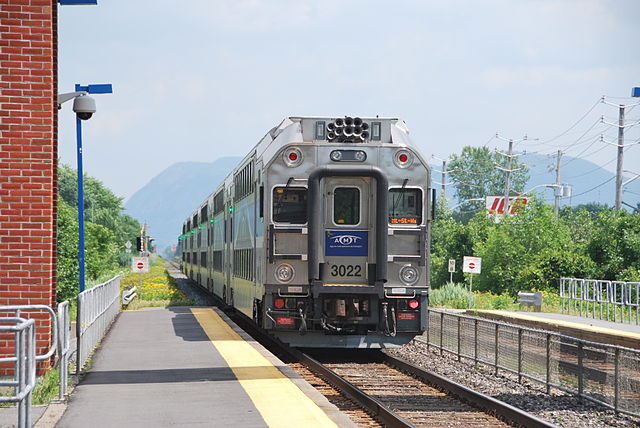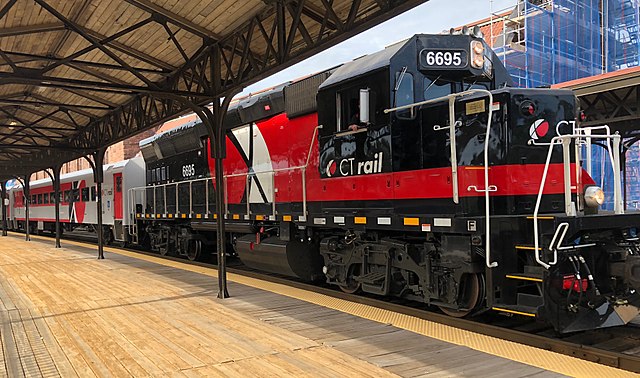@Urban Sky @reaperexpress
You're both knowledgeable people, most particularly in respect of railways in this case, and while I observe, I will generally avoid direct interjection here in as much as you are both more knowledgeable here than I.
By and large, in my reading, you're both, at least technically correct, in most, if not all of your points.
It would be my suggestion here than the differences comes down to two facets of perspective:
1) How do you manage with what you have?
2) How do get to a place with better infrastructure, sooner?
You clearly have different approaches in this regard.
I can clearly see the Railway Operator's perspective in your comments Urban Sky. You seem to be looking at this with a 'what's good for my bottom line today', and 'what's convenient for my staff today' perspective. That's understandable.....
But I'll confess to leaning towards what I see as Reaper Express' take. Which is the Customer perspective.
To be clear, as per our ongoing conversations here, there are limits to the customer perspective, even if money fell from the sky, VIA should not be running hourly service to Sudbury and selling those tickets at $20 a pop. There needs to be some guardrails in decisions that maintain profit or limit loss, that show a modicum of common sense, and generally protect the operator in terms of reliability, predictability and liability.
However, while not speaking for Reaper, I would read his comments as a reminder that most businesses that succeed, particularly when lacking a monopoly or gratuitous subsidy, do so with a customer centric lens.
That means asking what would make the customer experience better, in order to attract greater ridership, and possibly even higher ROI over time.
We've discussed the different facets of this many times, there's 'base expectation' (service works, is reliable, safe, clean etc.) , there's frequency, trip time, ambiance/experience at stations and on board, convenience (nearby station, last mile transport, ease of fare purchase etc.),
Taken together, the above can be reduced the term 'Value' for the customer. Value derives a couple of clear ideas "Did I get my money's worth?"; is the overall package comparable to or better than the competing option (Air/Car/Bus), did the service meet or exceed my expectation.
****
To take this back to the above exchange, I feel like the debate looks roughly like this:
Reaper: The VIA experience is sub-optimal, its lesser than industry peers, it affects customer perception negatively, its worse than it HAS to be, even with existing constraints.
VIA must be more insistent on getting better supporting conditions from host stations, and railways, to do that it needs to understand and place the customer perspective at the forefront, and it needs to grow ridership, which will in turn shift the politics towards VIA.
Urban Sky: That's nice, but in the real world, the railways and station owners aren't providing that support, changing procedures has risks and is a hassle and there's no budget.
The reason I lean towards Reaper's line of thinking here is I think the status quo needs disturbing. You simply can't drive ridership growth without a better customer experience. That can be about boarding........where VIA needs to get a high or higher level platform at Union, and one that's wider, for Corridor service. A 3x per week Canadian is a different matter than one that supports more commuters/frequent travelers over shorter distances.
I don't care how they get there.......lobby, threaten, cajole, mobilize customers, intentionally inconvenience Mx/GO or the City..........but play hardball for your customer.........and then bring the carrot.....(the feds will help pay for it).
On reliability, its the same.....don't get jerked about by CN.......I'm agnostic on how you get greater reliability and slightly faster schedule times......you want to invest in infrastructure........great, with a value for money focus? Sure! Reaper has provided
lots of helpful ideas, in detail, that are relatively low cost and would aid performance, and VIA needs to secure some funding for those, and then sign a clear deal with CN that is pay for performance. We're on time, or you get paid less.
On prices.........I would argue 5 tiers are too many, and when combined with dynamic pricing.........you lose predictability of cost for frequent/semi-frequent travel. I would argue that selling completely inflexible, low service tickets, tends to create way more negative customer impression than benefits.
I would also note, one problem with the way VIA prices is that there is very little incentive to bolster capacity, and the manner of how new rolling stock has been procured and set up (fixed consist size) and (lack of sufficient rolling stock to dramatically upscale capacity to meet demand).
How do you get more ridership if you build your system with fixed/limited growth potential?
Finally, to bring this back to the boarding experience, putting aside customer perception of that experience, I would argue it simply takes longer than needed, and that impairs the number of platform slots available to add service.
****
There's nothing incorrect about arguing that the customer-first approach is a challenge in many respects due to existing infra, operating arrangements and does carry some risks at the margins.
But as Reaper notes, for every risk it avoids, it creates new ones.
Just my quick take, from a lay person's perspective.

www.newswire.ca












